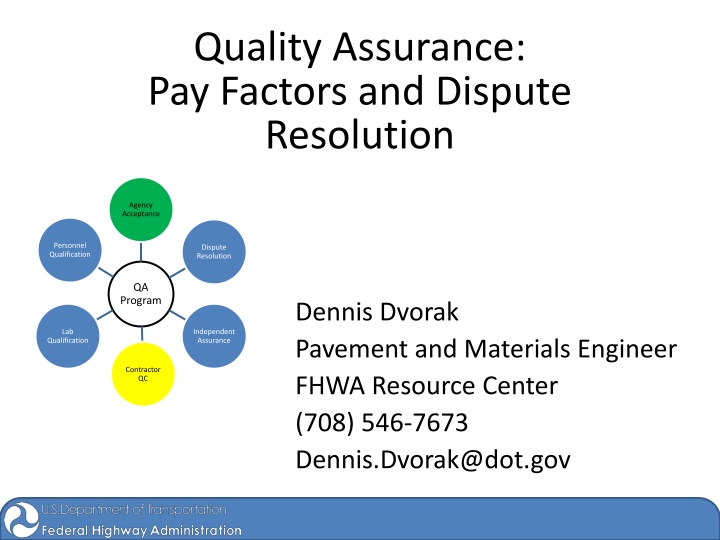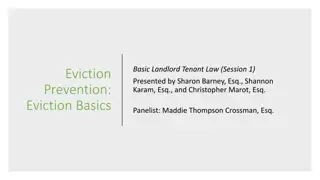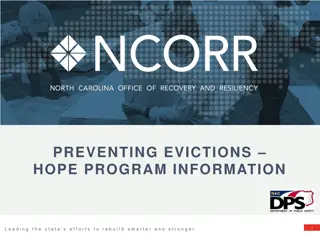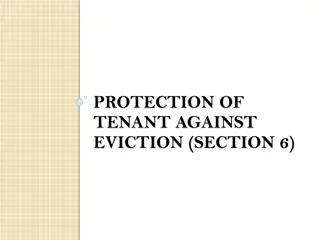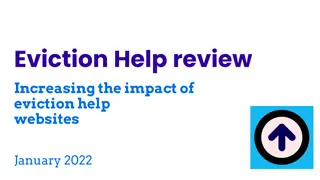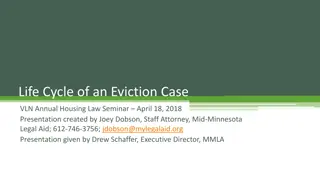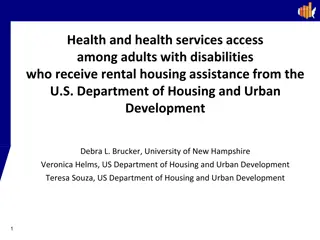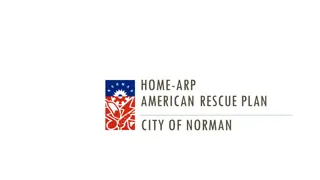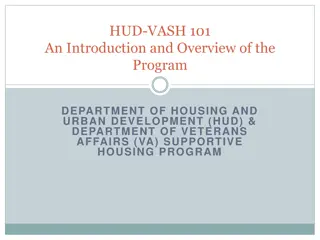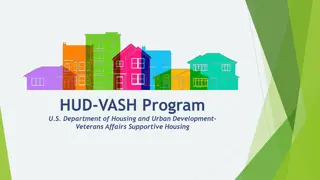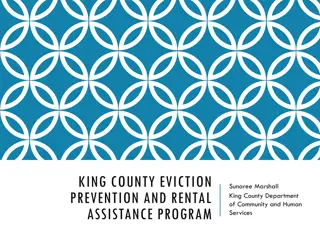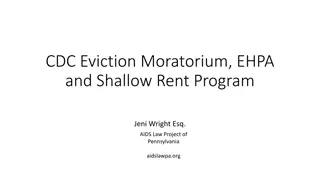HUD Eviction Protection Grant Program
The HUD Eviction Protection Grant Program (EPGP) offers legal assistance grants to service providers helping low-income tenants at risk of eviction. The program aims to increase housing stability through prevention, justice, diversion, and relief. $40 million in grant funds are available for eligible applicants who have at least three years of experience providing legal assistance to low-income individuals. Eligible activities funded by EPGP include legal representation, fair housing advice, eviction prevention, and tenant education. Beneficiaries are low-income tenants facing eviction or at risk of eviction.
Download Presentation

Please find below an Image/Link to download the presentation.
The content on the website is provided AS IS for your information and personal use only. It may not be sold, licensed, or shared on other websites without obtaining consent from the author.If you encounter any issues during the download, it is possible that the publisher has removed the file from their server.
You are allowed to download the files provided on this website for personal or commercial use, subject to the condition that they are used lawfully. All files are the property of their respective owners.
The content on the website is provided AS IS for your information and personal use only. It may not be sold, licensed, or shared on other websites without obtaining consent from the author.
E N D
Presentation Transcript
Quality Assurance: Pay Factors and Dispute Resolution Agency Acceptance Personnel Qualification Dispute Resolution QA Program Dennis Dvorak Pavement and Materials Engineer FHWA Resource Center (708) 546-7673 Dennis.Dvorak@dot.gov Lab Independent Assurance Qualification Contractor QC
Why is Quality Assurance (QA) Important? - Testing Materials - Inspection of Workmanship Approximately 70% of the construction Dollar is spent for the PURCHASE of materials. 2
Core Elements of a QA Program Agency Acceptance Personnel Qualification Dispute Resolution QA Program Lab Independent Assurance Qualification Contractor QC
Material MaterialProcess ProcessSampling SamplingTesting Testing Process Testing Sampling Material Composite Variability
Agency Acceptance Verification sampling & testing Acceptance & payment May include contractor test results if validated 5
Contractor Quality Control (QC) Materials sampling & testing If part of acceptance decision Independent of agency verification Qualified technicians Qualified laboratories Independent assurance evaluation 6
Quality Assurance Program Independent Assurance (IA) Evaluate all acceptance sampling & testing Separate from acceptance testing Technician procedure evaluation Testing equipment evaluation Note: See 23 CFR 637.207(a)(2) and 637.209(b) for specific requirements. 7
Qualified Laboratories & Accredited Laboratories All state central labs must be accredited. All private labs conducting dispute or Independent Assurance testing must also be accredited. All other labs must be qualified through a state sponsored program. 8
Requirements for Personnel Qualification/Certification Recommended program guidelines: Formal training; hands-on training On-the-job training Written and performance examinations Periodic re-qualification (typically 2-5 years) Process to remove personnel performing procedures incorrectly, falsifying statements or data 9
Function of Materials Testing Dispute Resolution Formal system designed to address significant differences between partners data of such magnitude to impact payment Not intended to address day to day issues Required (by FHWA) when contractor results used in acceptance decision 10
Responsibility for Materials Testing Dispute Resolution Can be performed within the State DOT Use of accredited third party laboratory can be used. 11
What do we want from a pay factor? Obtain a more uniform product Increase service life Fairness issues Owner needs to know product quality Pay for what you get Reward contractors for quality
Percent Within Limits (PWL) Using the statistical sample data, with its mean and standard deviation, we can determine the quality level of the statistical sample III - 13
PWL Efficiently captures mean and standard deviation in one quality measure X - mean s - standard deviation -3s -2s -1s 1s 2s 3s X
Using PWL to Compute Pay Factors Pay Factors: Recoup reduced life expected from poor quality work Reward increased performance from increases in product consistency
Pay Factor Formula A pay factor formula presents a mathematical equation that typically derives a linear schedule of pay from the PWL AASHTO provides a recommended equation: Pay Factor (PF) = 0.55 + 0.5 (PWL) (PWL is expressed as a decimal value in this equation)
Maine Example Data analysis of materials testing from 1978- 1998 Per cent passing tests ranged from 87%-92% every year Confirms that our industry, without incentives, operates around 90 PWL
Questions 18
